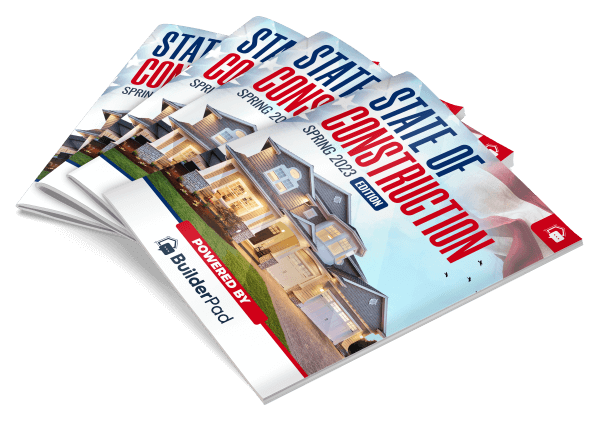In the fiercely competitive world of construction management, the difference between winning and losing a contract often hinges on pricing strategies.
While the lowest bid may catch a client’s eye, it’s the most value-effective bid that ultimately wins.
This article delves into the nuances of setting competitive prices, balancing the tightrope between profitability and attractiveness in bids.
It also explores how savvy construction managers can use competitive pricing as a tool to not only win bids but also build long-term client relationships.
Understanding this balance is key to sustaining business growth and reputation in the construction industry.
Understanding Market Dynamics

The construction market is as dynamic as it is diverse. Economic fluctuations, supply chain disruptions, and evolving client demands significantly influence cost structures.
By examining recent market trends and analyzing successful bidding strategies, construction managers can better understand how to position their bids.
For instance, a study of urban development projects reveals a trend towards sustainability, influencing both material choices and pricing strategies.
Staying abreast of these trends is crucial for construction firms to remain competitive. Moreover, adapting to these changes quickly can be a significant advantage in securing contracts.
Balancing Costs and Profit Margins

Competitive pricing is not just about lowering costs; it’s about smart cost management. Strategies like bulk purchasing, investing in efficient technology, and optimizing labor can significantly reduce project costs.
However, the key is to maintain a balance where these cost reductions do not compromise the quality of work or erode profit margins. Effective project management software can play a pivotal role in tracking and maintaining this balance.
Additionally, transparent communication with suppliers and subcontractors can lead to more favorable terms and lower costs. It’s also important to factor in potential cost overruns and include them in the pricing strategy to avoid surprises.
Cloud-based construction management platforms like Builderpad give everyone on a project access to the same information in real-time.
Details like change orders, RFIs, schedules, drawings, and safety incidents can be updated and synced across the platform. This improves coordination by eliminating information silos.

Innovative Pricing Strategies
The construction industry is ripe for innovative pricing models. Dynamic pricing, for instance, adjusts bids based on real-time market data, giving firms an edge in responsiveness.
Additionally, the integration of AI in cost estimation can provide more accurate and competitive pricing. These innovations, already adopted by industry leaders, demonstrate the potential of technology in revolutionizing pricing strategies.
Exploring partnerships with tech firms can also open doors to advanced tools and methodologies. It’s essential for construction firms to continually evolve their pricing strategies to stay ahead in the competitive landscape.
Risk Management in Competitive Pricing

Low-cost bids carry inherent risks – from quality compromises to potential legal disputes.
It’s crucial to identify these risks and develop mitigation strategies. For example, ensuring compliance with safety standards and building codes is non-negotiable, even in the most aggressively priced bids.
The article discusses ways to balance risk and reward in competitive pricing. Regular risk assessments and contingency planning are vital components of this process.
Furthermore, training staff to recognize and manage risks can significantly reduce the potential for costly errors and disputes.
Case Studies: Successes and Lessons Learned

Real-world examples bring theory into perspective. This section profiles construction firms that have successfully used competitive pricing to win bids, analyzing the strategies that worked for them.
Conversely, it also examines instances where aggressive pricing led to project failures, offering critical lessons for construction managers.
Each case study provides unique insights into the multifaceted nature of competitive pricing. Learning from these experiences, both positive and negative, equips construction managers with the knowledge to refine their bidding strategies effectively.
Conclusion
Competitive pricing in construction management is an art that requires a deep understanding of market dynamics, cost management, and risk assessment.
By adopting innovative strategies and learning from both successes and failures in the industry, construction managers can master this art, positioning their firms for success in the bid war.
As the industry continues to evolve, so must the strategies for competitive pricing. Embracing change and innovation will be key to staying ahead in the competitive world of construction bidding.
Takeaways
- Understanding market dynamics and trends is essential for developing competitive pricing strategies. Stay updated on economic conditions, client demands, and supply chain factors that influence costs.
- Balance cost reduction strategies with maintaining profit margins and quality. Leverage technology, bulk purchasing, and efficient labor without compromising on project delivery.
- Innovate on pricing models like dynamic pricing and AI-driven estimations. Explore partnerships with tech firms to access advanced pricing tools and methodologies.
- Manage risks associated with low bids through compliance, contingency planning, and staff training. Regular assessments and mitigation strategies are key.
- Learn from case studies of successful bids and past failures. Each experience provides insights into nuances of competitive pricing.
- Competitive pricing is an evolving art that requires keeping up with industry changes and innovations. Embrace change to stay ahead in construction bidding.
- Use recommended resources like software, industry networks, and publications to sharpen bid management skills and get market updates.
The key takeaway is that construction firms must bring together market savviness, cost optimization, risk management, and innovation to develop winning competitive pricing strategies. Mastering this evolving art is essential for success in construction bidding.







